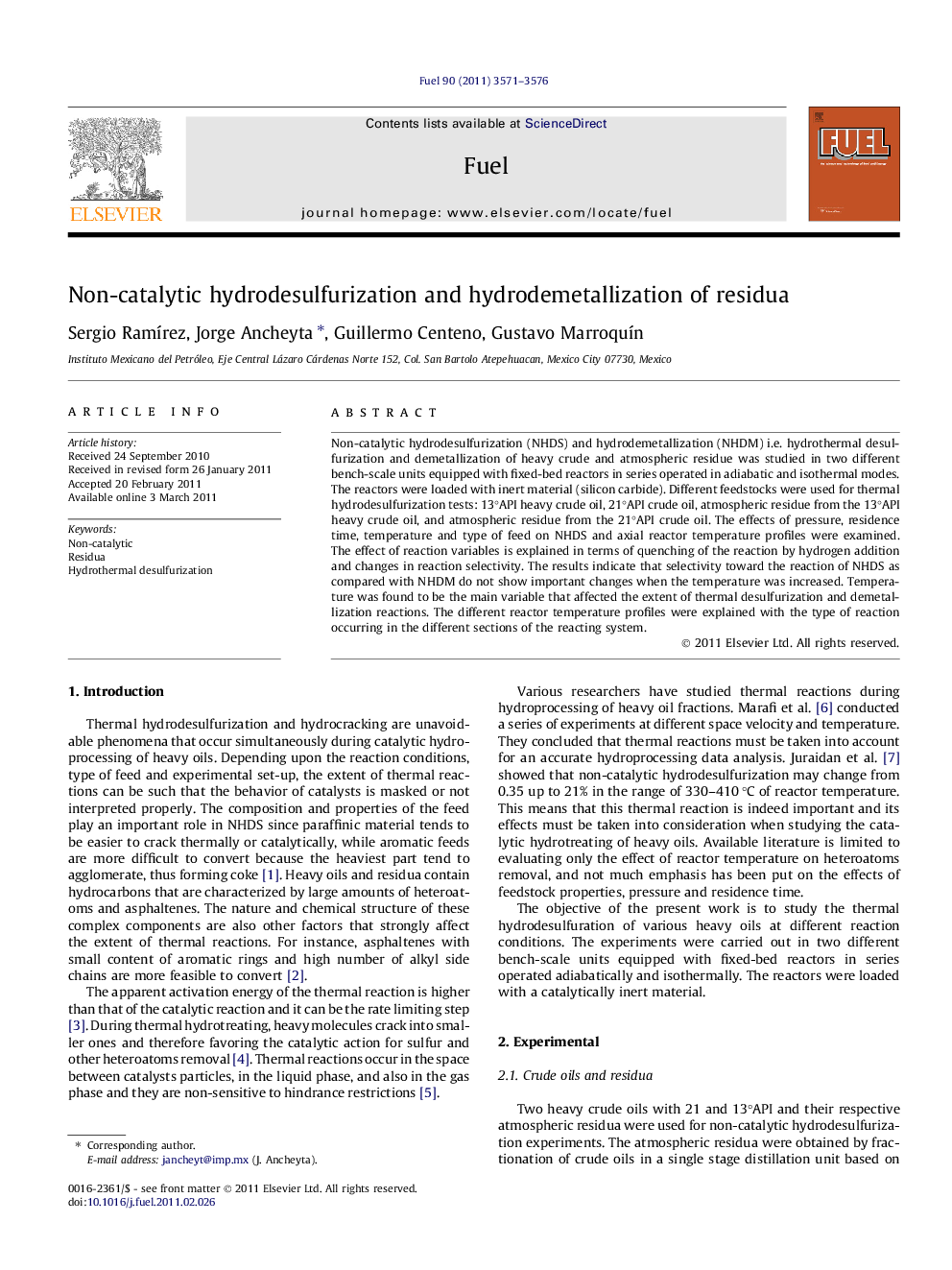| Article ID | Journal | Published Year | Pages | File Type |
|---|---|---|---|---|
| 206351 | Fuel | 2011 | 6 Pages |
Non-catalytic hydrodesulfurization (NHDS) and hydrodemetallization (NHDM) i.e. hydrothermal desulfurization and demetallization of heavy crude and atmospheric residue was studied in two different bench-scale units equipped with fixed-bed reactors in series operated in adiabatic and isothermal modes. The reactors were loaded with inert material (silicon carbide). Different feedstocks were used for thermal hydrodesulfurization tests: 13°API heavy crude oil, 21°API crude oil, atmospheric residue from the 13°API heavy crude oil, and atmospheric residue from the 21°API crude oil. The effects of pressure, residence time, temperature and type of feed on NHDS and axial reactor temperature profiles were examined. The effect of reaction variables is explained in terms of quenching of the reaction by hydrogen addition and changes in reaction selectivity. The results indicate that selectivity toward the reaction of NHDS as compared with NHDM do not show important changes when the temperature was increased. Temperature was found to be the main variable that affected the extent of thermal desulfurization and demetallization reactions. The different reactor temperature profiles were explained with the type of reaction occurring in the different sections of the reacting system.
